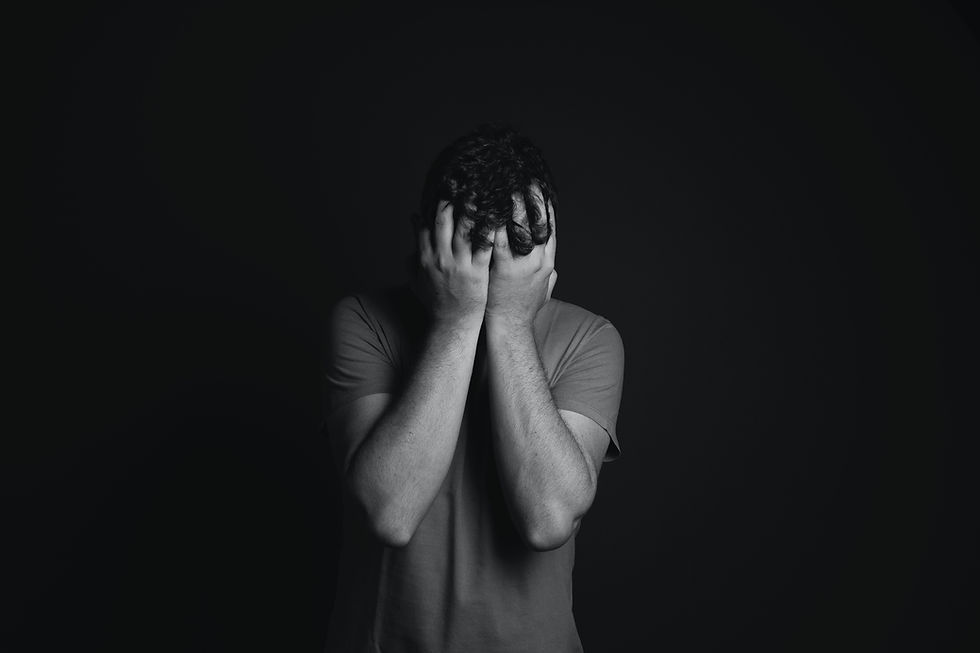A New State of Mind: Challenging the Stigma of Mental Health in the Fashion Industry
- Maariyah Haddad

- Oct 8, 2020
- 4 min read
Updated: Aug 20, 2021
Mental health has always been considered as a taboo subject, creating unnecessary and harmful social stigmas which have inevitably led towards an increase in mental health issues in society.
Previous perspectives on mental health were predominantly negative, enabling issues to exacerbate until there were, consequently, devastating effects. Although over the last few years there has been an increase in the awareness regarding people’s mental wellbeing and emotional state, the subject of mental health is still regarded as a taboo, especially within the fashion industry.
Mental health has always been a part of fashion. People subconsciously choose items of clothing down to the colour and style that reflects their inner emotional state. Pierre XO, an American musical artist provided a thoughtful insight into mental health and fashion on his YouTube platform in 2019. He identified that ‘contemporary music movements have appropriated certain articles of clothing that signify their state when it comes to their emotional wellbeing.’
If we think about the colour black and dark clothing, connotations of death, anxiety and depression are applied due to these movements previously using the colour to represent their emotional state of mind. So, when people see the colour black, they automatically perceive the person wearing the clothing to be “emotionally unstable” or suffering from mental health issues.
Ultimately, clothing has gained a type of social expectation which allows people to view and perceive us in a certain type of way. It is this very construct that enables stereotypes to form based on previous ways of thinking.
Fashion as a form of self-expression
It is interesting to think that subcultures within society are acknowledged entirely by these cultural and social appropriations which determine an individual’s place in society. We ought to consider, then, how the fashion industry is approaching this predetermined culture and how it is participating as part of the cultural shift happening right now. The fashion industry is most certainly a huge part of our popular culture that exists within the current climate that is our capitalist society.
People have always used fashion as a way to incorporate their individuality, creativity and self-expression. Fashion has often been used as a displacement for our true feelings and emotions. The reality is that we hide behind our clothing in hopes of fitting in to other people’s expectations of what we should be and what we should look like, to feel as though we belong. How has the fashion industry acknowledged that this exists within our society and what is being done about it?
Controversial fashion?
Last year, controversy hit the global designer brand Gucci for its unconventional approach to making a fashion statement by using mental health as the primary subject. Alessandro Michele, creative director for Gucci designed white straitjackets and institutional uniforms for Milan Fashion Week in 2019. During the fashion show, models were seen aligned somewhat mechanically on a conveyor belt catwalk wearing restrictive clothing representing mental illness.
Ayesha Tan Jones, a model for Gucci participated as part of the show whilst staging a silent protest, having written the words ‘mental health is not fashion’ on their hands. In an Instagram video, Jones made a statement retaliating against the concept behind the fashion statement. They wanted to emphasise that mental health should not be sold as fashion and contributing towards ‘today’s capitalist climate‘.
Jones’ view is completely understandable – the fashion industry shouldn’t be desensitising and exploiting something so vulnerable and sensitive as mental health.
Contrary to this idea, in response to Jones’ statement, a spokesperson from Gucci explained the reasoning behind the statement, indicating that ‘the show presented how society today can have the ability to confine individuality and how Gucci can be the antidote. It was a journey from conformity to freedom and creativity.’
Although Michele received backlash for misappropriating mental health through fashion, he makes it clear that the clothing was not for sale and the concept was purely a statement for the show. The inspiration behind the designs was essentially representing ‘how through fashion, power is exercised over life, to eliminate self-expression’.
Eradicating the taboo of mental health?
Ultimately, this can be addressed in one of two ways. The first, that mental health should under no circumstances be appropriated through fashion to show the message of how power eliminates self-expression. The issue goes much deeper beyond this.
Traditionally, straitjackets were used as a form of control and torture in an attempt to pacify patients during the nineteenth century. Therefore, attempting to culturally appropriate this form of torture and what it represents for the sake of “self-expression” is degrading and offensive to people who suffer from mental health.
The second approach to perceiving this statement is to consider how Michele manifests the stigma and “taboo” of mental health by effectively showing how one should not be restricted or limited to express themselves.
By bringing attention to such a controversial subject, Michele is ultimately enabling discourses surrounding mental health to become acknowledged in the fashion industry.
This can be considered as ironic – creating a controversial statement by using straitjackets and institutional uniform that represents mental illness, restriction and the limitations of freedom to emphasise that people’s self-expression is often limited and restricted within society.
Michele is ultimately highlighting that self-expression is always something that we feel restricted by – even if we wear clothes that represent our emotional state. We are all vulnerable and susceptible to being restricted by society and in a complex way, Michele is creating an awareness of how this inevitably affects our mental health.



Comments